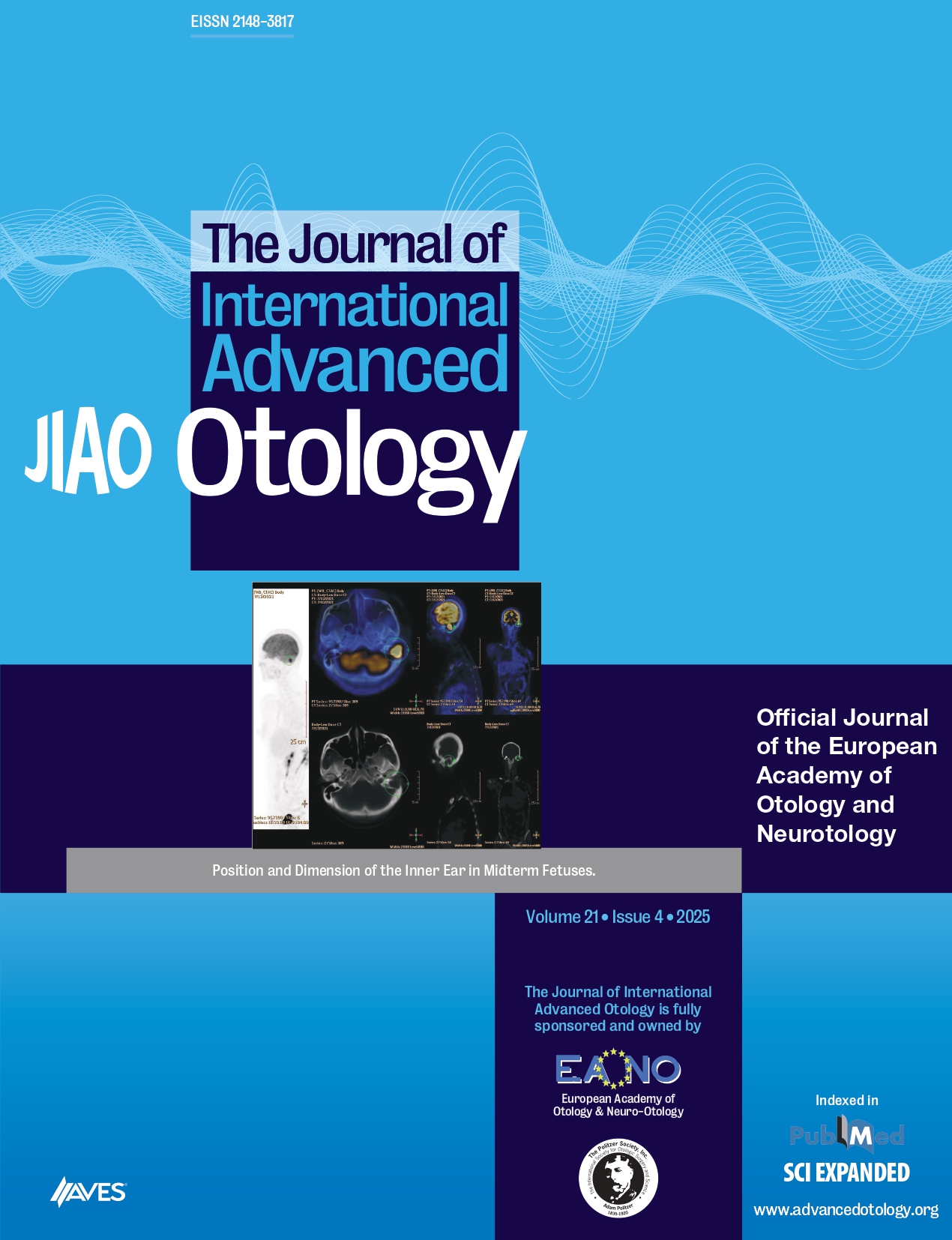Abstract
OBJECTIVE: The aim of this study is to investigate otoacoustic emissions (OAEs) in young children with autism compared with those in an age-matched control group.
MATERIALS and METHODS: Thirty-eight children with autism aged 3-6 years and 27 typically developing (normally developing) control subjects participated in this study. All the participants had normal hearing and middle-ear function. Auditory brainstem responses were used to determine the hearing status in the autism group. Transient-evoked otoacoustic emissions (TEOAEs) and distortion-product otoacoustic emissions (DPOAEs) were measured in the two groups.
RESULTS: The TEOAE response level was higher in the autism group. Analysis of the DPOAE response showed that the mean emission levels at 1.5, 2 , 3, and 6 kHz and signal/noise ratios at 2, 4, 6, and 8 kHz were higher in the autism group (p<0.05). The greatest between-group differences were observed in the DPOAE signal levels at 2, 3, and 6 kHz (p=0.000). No statistically significant difference was found between the noise levels in the autism and control groups (p>0.05).
CONCLUSION: The emission responses in the autism group were higher than those in the control group. The increase in DPOAEs at high frequencies may be related to the higher outer cell activation in the autism group. Further studies with larger sample sizes comprising younger children are needed to confirm the result and investigate the possible association between the increased OAEs and auditory sensitivity reported in autism.
Cite this article as: Taş M, Yılmaz Ş, Bulut E, Polat Z, Taş A. Otoacoustic Emissions in Young Children with Autism. J Int Adv Otol 2017; 13: 327-32.



.png)
.png)